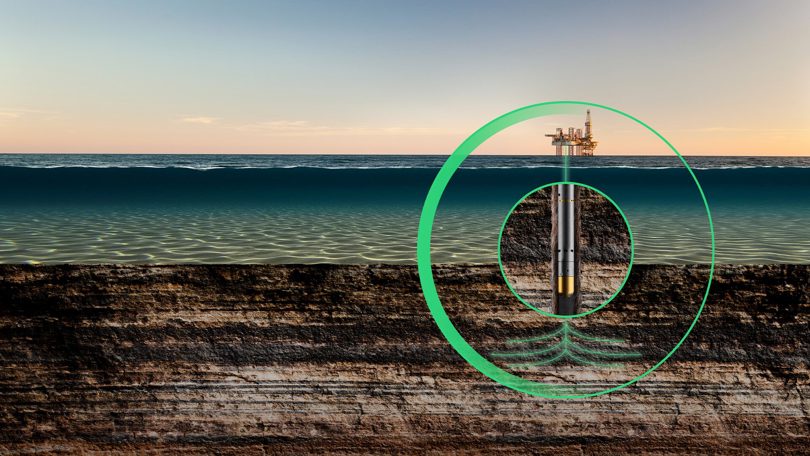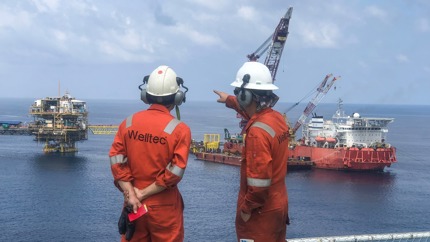
Reinstating functionality and integrity
Repairing a Downhole Safety Valve (DHSV) reinstates well integrity and allows a well to be put back on production.
Repairing Tubing Retrievable Subsurface Safety Valves (TRSSSV) saves having to perform a lock open operation and from having to install a Wireline Retrievable Subsurface Safety Valve (WRSSSV) which will restrict production.
If functionality and/or integrity of a TRSSSV cannot be reinstated, the TRSSSV can be locked open and a WRSSSV installed, preventing the need to carry out a time consuming and expensive workover.
Scale, asphaltene, wax or other debris can accumulate in the tubing and the DHSV, this can obstruct access to and/or the functionality of DHSV’s. Welltec’s range of milling, clean-out, and mechanical services are engineered to address a wide variety of downhole access challenges. For increased efficiency, often two or more services can be combined in a single run.

Our modular clean-out tools have proven to be beneficial in maintaining and restoring production across diverse environments. To keep production optimized, periodic interventions with our clean-out solutions can remove the unwanted by-products associated with oil and gas production including sand, scale, mud, etc.

Performing a TRSSSV lock out
Performing a TRSSSV lock open operation presents its own set of challenges, typically a TRSSSV that requires to be locked open has been in a well for a considerable length of time, given this when required to be locked open the conventional methods or tools are not always effective in achieving this, some methods carry risks of further developing the problem downhole.
Attempts to lock open the flowtube with the lock open tool, or to set a “beer can” to hold open the sleeve and set it across the flapper can fail, this conventional method will introduce risks of compounding the problems with the TRSSSV and can also cause a complex fishing operation.
The Well Key® Dimple Tool is designed to permanently lock open TRSSSV’s in a single run. Running into the hole in a slick configuration, it is opened at depth and automatically engages with the flow tube for which it was set-up for. Once engaged, the Well Stroker® provides the force to shift the flow tube in the required direction and position, with pinpoint accuracy the Well Key® Dimple Tool deforms the sleeve by making “dimples” in its surface, thus locking the sleeve in a fixed open position.

Mechanical tubing punch
As part of a TRSSSV lock open operation it is required to establish communication with the TRSSSV control line for operating an insert WRSSSV, some TRSSSV’s require a mechanical tubing punch to be run to punch a hole inside a pocket in the TRSSSV. The Welltec® Puncher provides an efficient non-explosive method for quickly drilling precise communication hole(s) into the TRSSSV control line pocket,
where attempts with the lock open kits mechanical tubing punch have failed to achieve this. This same tool can also be used to punch a communication hole through a TRSSSV control line sleeve that has failed to be shifted open.

Recovering a WRSSSV on slickline
Recovering a WRSSSV on slickline or braided line can prove problematic, this problem escalates the shallower and/or larger the valve is, the direct axial forces produced by the Well Stroker® mean that all the applied force travels down the toolstring and through the WRSSSV reaching the stuck point where you need to apply the load, also the load applied can be held and kept on the target area, unlike an impact.
When jarring peak impact is delivered over a very short time span, if the impact is plotted vertically against time, the area under the curve (impulse of force) is relatively small; this demonstrates why impact is not necessarily a good measure of actual force applied, and explains why peak impacts higher than the yield (or even tensile) strength of a target do not in turn break or free it. Direct axial force unlike an impact is not absorbed even on a soft target, and can even be maintained on a moving target, making it an ideal fit for recovering WRSSSV’s.
Setting a WRSSSV can also prove to be challenging due to condition of the nipple profile and/or seal bores, again our clean-out solutions can be called upon to address this problem ensuring a clean profile for setting a WRSSSV.
Which solution is right for you?
Well completions & interventions are critical for optimizing production and maximizing well productivity. At Welltec, our team of specialists excel in navigating the complexities of any well, onshore, offshore, or subsea.
Reach out today and explore which solution can help you meet your specific goals.


Optimizing recovery
From pioneering wireline interventions in horizontal wells, to our ever-expanding range of custom-made solutions, we strive to simplify complex interventions into more standardized operations.